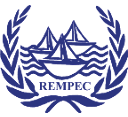1947 - Grandcamp
| Year | 1947 |
| Vessel | Grandcamp |
| Location | Port of Texas, USA |
| Cargo type | Bulk |
| Chemicals | AMMONIUM NITRATE (>0.2% combustible substances) , AMMONIUM NITRATE solution (93% or less) |
Summary
In April 1947, the freighter Grandcamp was being loaded with ammonium nitrate in the port of Texas City U.S.A. The longshoremen noticed that a fire had started in one of the holds and asked for water to put it out. The only supply available consisted of two jugs of drinking water and a two-gallon fire extinguisher. Naturally not enough, this failed to quell the blaze, but the ship's master refused to allow a hose to be used on the grounds that the water might damage the cargo. As a result, the fire spread and by the time the fire department had been called it was too late: less than an hour later the ship exploded with such force that the two light planes flying overhead were destroyed by the blast. The explosion also blew the hatch covers off another ship, the High Flyer, which was moored away and was also carrying ammonium nitrate. This vessel also caught fire and subsequently blew up.
A total of 468 people were killed, mostly as a result of the first explosion.
Narrative
In April 1947, the freighter Grandcamp was being loaded with ammonium nitrate in the port of Texas City U.S.A. The longshoremen noticed that a fire had started in one of the holds and asked for water to put it out. The only supply available consisted of two jugs of drinking water and a two-gallon fire extinguisher. Naturally not enough, this failed to quell the blaze, but the ship's master refused to allow a hose to be used on the grounds that the water might damage the cargo. As a result, the fire spread and by the time the fire department had been called it was too late: less than an hour later the ship exploded with such force that the two light planes flying overhead were destroyed by the blast. The explosion also blew the hatch covers off another ship, the High Flyer, which was moored away and was also carrying ammonium nitrate. This vessel also caught fire and subsequently blew up.
A total of 468 people were killed, mostly as a result of the first explosion.
Resume
According to IMO's BC Code, ammonium nitrate is carried as crystals, granules or prills, which are wholly or partly soluble in water. A major fire aboard a ship carrying these materials may involve a risk of explosion in the event of contamination (e.g. by fuel oil) or strong confinement. An adjacent detonation may also involve a risk of explosion.
If heated strongly, the product can decompose giving off toxic gases and gases which support combustion. The Code states that adequate supplies of water for fire-fighting purposes should be available from the fire main whenever this material is on board. In case this cannot be supplied by the ship's pumps, it should be increased to the required amount by means of portable pumps.
No welding, burning, cutting or other operations involving the use of fire, open flame, spark- or arc-producing equipment should be carried out in the vicinity of the cargo space except in an emergency.
Prior to loading, the Code states that the following measures should be taken:
- the temperature of the material should not be above 40ºC;
- the fuel tanks situated under the cargo spaces to be used for the transport of this material should be pressure tested to ascertain that there is no leakage of manholes and piping systems leading through the spaces; and
- any electrical circuits terminating in the spaces to be used for this material should be electrically disconnected from the power source at a point external to the space. This situation should be maintained as long as the material is on board.
During loading and discharging, the Code states that the following measures should be taken:
- smoking should not be allowed on deck and in the cargo spaces. "NO SMOKING" signs should be displayed. These precautions should be observed as long as the material is on board;
- bunkering or pumping of fuel should not be allowed; and
- fire hoses should be laid out or be in position and ready for immediate use.
The subsequent inquiry exposed numerous deficiencies. The cargo on board the Grandcamp was labelled "fertilizer compound" which had a lower freight rate than ammonium nitrate and no danger labels were attached. As a result, the longshoremen were unaware of the danger and failed to take the normal precautions such as banning smoking.
The fire-fighting methods used were also wrong. Attempts were made to extinguish the fire with steam which probably made things worse. It is now advised that a fire involving ammonium nitrate should be fought with large quantities of water and that steam or inert gas should not be used.

